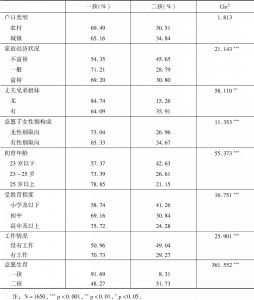章节
我国实际低生育水平的影响因素分析
关键词
作者
李建新 ,北京大学社会学系教授、博士生导师。1983年获新疆大学理学(数学)学士学位、1995年获北京大学法学(人口学)博士学位。1985~1986年在中国人民大学人口学培训班进修、1990~1991年在印度孟买国际人口学院研究生班就读、1997~1999年在日本东京都立大学从事博士后研究工作、2004年在美国密歇根大学做访问学者。研究领域:人口学、人口社会学、老龄健康等。代表著作:《转型期中国人口问题》(2005)、《中国人口结构问题》(2009)、《中国人口之殇》(2013)、《中国人太多了吗?》(合著,2012)、《中国人口:太多还是太老》(合编,2005)、《21世纪中国人口生育政策论争》(合编,2010)和《中国民生发展报告2015》(合著,2015)等。
彭云亮
检索正文关键字
章节目录
- 一 引言
-
二 文献与研究设计
- (一)文献综述
- (二)研究设计
-
三 数据与方法
- (一)数据来源
- (二)变量描述
- (三)研究方法
-
四 模型结果分析
- (一)描述分析
- (二)多元分析结果
- 五 小结
相关文献
查看更多>>>




